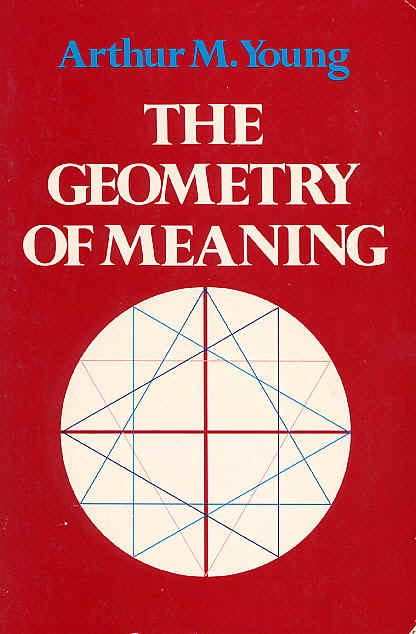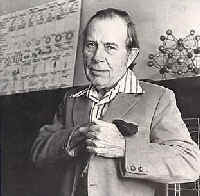
*

Introduction
"All meaning is an angle."
I don't know where I first encountered this enigmatic statement. I do recall that its origin was said to be in ancient Egypt, and I draw great comfort from this confirmation that there was at one time, perhaps so long ago that it was not even registered by Greek thought, a tradition that reflected the same conclusions I have reached after a lifelong effort to formulate meanings without reverting to the circularity found, for example, in dictionary definitions.
I would like to call this book an essay in philosophy. However, I should point out that I do not mean philosophy as it is usually practiced today, but in the older sense of "the science which investigates the facts and principles of reality." In this sense, philosophy not only encompasses the natural sciences, but explores the implications of the findings of science, and also deals with the relationship between the knower and the known.
Finding the abstruse mathematical formulations of science incomprehensible, modern philosophy falls back on the meaning of words. It therefore loses touch with the reality that gives science its strength and is the ultimate reference for the words upon which philosophy depends.
The ignominy of this retreat was recognized as early as 1905, when the American philosopher Charles Sanders Peirce berated metaphysicians for not pursuing truth more vigorously:
"Its business (i.e., metaphysics) is to study the most general features of reality and real objects. But in its present condition it is, even more than the other branches of coenoscopy (the study of ordinary things) a puny, rickety, and scrofulous science. It is only too plain that those who pretend to cultivate it carry not the hearts of true men of science within their breasts. Instead of striving with might and main to find out what errors they might have fallen into, and exulting joyously at every such discovery, they are scared to look Truth in the face. They turn tail and flee her. Only a small number out of the great catalogue of problems which it is their business to solve have ever been taken up at all, and those few most feebly. Here let us set down almost at random a small specimen of the questions of metaphysics which press, not for hasty answers, but for industrious and solid investigation: Whether or not there be any real indefiniteness, or real possibility and impossibility? Whether or not there is any definite indeterminacy? Whether or not there be any strictly individual existence"*
Philosophical Writings of Peirce (p. 314). Justus Buchler, ed. New York: Dover Publications, Inc., 1955.
Though the list of questions continues for half a page, I have quoted only the first few as highly significant. In his question "Whether or not there is any definite indeterminacy?" Peirce anticipates Heisenberg's discovery of indeterminacy by more than twenty years. In asking "Whether or not there be any strictly individual existence?" he seems to sense the real flavor of quantum theory, with its discrete entities immersed in the continuum. Peirce's third question is thus equivalent to the continuing problem of the reconciliation of quantum theory (with its discrete particles) and relativity (with its continuum).
Peirce's questions, as he rightly observed, are metaphysical. They begin where science leaves off. The conflict between discreteness and continuity, so prominent in modern science, is only an old theological conflict in a new guise: whether individual freedom (like the quanta with their definite indeterminacy) is possible in a universe run by God (a continuum with implied uniformity).
Although Peirce was a philosopher, I am using this example to suggest that even the unspecialized thinker has access to basic questions which transcend technical proficiency; and that these basic questions are approachable insofar as one resists getting sidetracked by technical obfuscation, and maintains an awareness of the whole.
I take the position that a whole object or situation is divided into aspects (or, to use Aristotle's word, causes) and that these aspects have an angular relationship to one another. An account of this division is the purpose of this book. The ultimate goal is to regain the whole by knowing how the parts fit together. The separation of form from function, or fact from belief, has led to a strange and disconcerting hiatus in our present thinking. We have been so busy perfecting the means of travel that we have forgotten where we wanted to go.
Is my opening statement, "All meaning is an angle," too abstract? Not if one accepts my allegation that meaning is in general a kind of relationship. In terms of people, for example, let us take two men competing in a tennis match. They are opponents. They face each other. Their positions, both literally and metaphorically, are represented by an angle of 180 degrees, or a diameter. We refer to diameter when we say that two opinions are diametrically opposed.
A tennis match is judged by a referee who sits at one end of the net, at right angles to both opponents, surveying their interaction, but as an impartial witness, leaning neither way. The geometric or angular reference is not really so much difficult as it is disarming; it is so natural that we overlook it.
Some readers will find the geometry easy but will object to my interpretations, insisting that I put an improper "construction" on the technical devices of science. Yet not to transgress the presumed divisions between categories — not to attempt a translation of one into the other — would be to abandon the very purpose of my efforts, which is to devise a technique for structuring the components of meaning.
The customary procedure in any science is a process of induction from a myriad of particular observed phenomena to their description and explanation in terms of a few simple abstract properties. Since these fundamental terms lie deeper than definition, they are acknowledged as undefinable; and since they cannot be further reduced by the inductive method, it is presumed that they are truly basic. In this book, however, we postulate a unity whose division into aspects creates those undefined terms of science.
We find that simultaneous divisions of the whole into two, three, or four parts yields a meaningful description of these parts. Division into four is taken up first because it is the most easily grasped by rational thought. Next I will discuss the threefold division, and finally the twofold. Because it is so far beyond rational understanding, we can say little about the initial unity itself beyond describing it, in one sense, as the dynamic potency whose division creates a tension between the parts. In causing their interaction, this tension creates meaning.
Our method is technical only in that the manner in which the division of totality refines itself into a technique is similar to the manner in which measurement refined itself into geometry. Like this book, geometry came about through a quest for order. Geometry is an ordering so abstract that the roles of its elements, points and lines, can be interchanged, leaving its basic propositions intact: a line is determined by two points; a point is the intersection of two lines. The validity of geometry is independent of the substantial nature of the elements it employs. I believe equally fundamental relationships lie at the foundation of existence itself.

Used with the kind permission of Anodos Foundation.